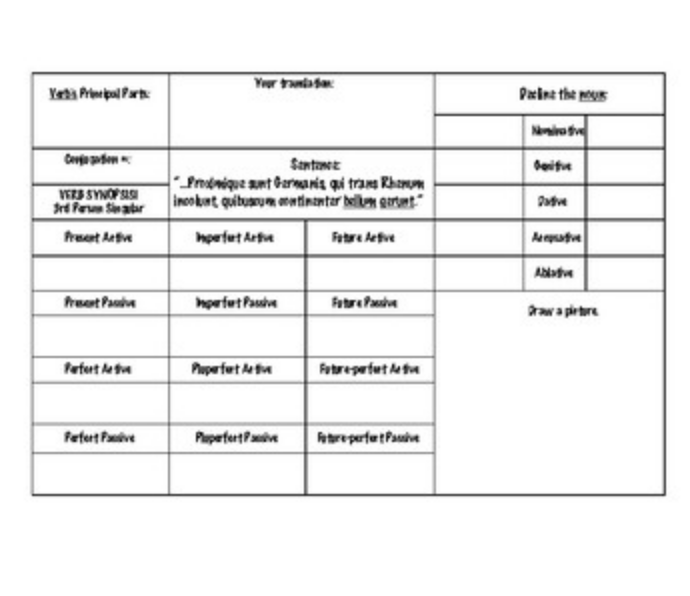AP Latin Practice
When I taught AP Latin, I was challenged as a new teacher because of the lack of resources in existence. At the time, the AP exam had switched content but did not have any practice exams yet (nor an AP Latin prep book!). This inspired me to make my own AP Latin resources for my students. I was so determined that I went to several summer AP Latin institutes (if you ever get the chance— the Cherry Creek Summer AP Institute was by far the best).
I loved that AP Latin included so much grammar. I loved bouncing through subjunctives and ablatives and indirect statement and teaching the mathematics of dactylic hexameter scanning. I am more passionate about philology than literature, so I threw all of my efforts into creating resources that broke down the grammar for my students. Because there is so much memorization required for AP Latin, I focused on activities that would improve my students’ memory and terminology retention.
When it came to an AP Latin practice exam, I was out of luck since one didn’t exist the first year I taught the course. Now there are previous exams, but because I wanted to provide my students with authentic AP Latin practice, I churned out as much prep content as possible and just made them myself. Here are some of my favorite review tactics for AP Latin:
Daily:
Warm-ups. My style of warm-ups has drastically improved over the years. My current favorite is to center on one sentence, and dissect words within it for complete comprehension. For instance, if I wanted to go through the sentence “Arma virumque cano…” we would both decline “vir” and give a complete synopsis of “cano, canare”. I’ve made sets for both authors on the AP Latin syllabus: 50 Vergil warm-ups and 50 Caesar warm-ups.
Weekly:
Vocabulary Puzzles to review terms from previous months (spiraling to increase the Latin vocab retention). These are tedious to make but easier once you’ve made your first template!
1 Translation quiz and 1 Vocab Quiz (I prefer the style of vocab quiz where the students are given a complete paragraph and then have to translate certain words but include tense, etc. because they are given context and better suited for AP Latin practice)
Over each weekend, I chose a passage that my students struggled with and broke it down for them. I typed the clauses into a PPT, then used an iPad app “Explain Everything” which allowed me to record my voice and writing so my students could see and hear me connecting a verb to its direct object. I then uploaded these videos to a website called EdPuzzle and assigned them to my students to watch. Websites like this are amazing— they also allow you to ask questions to your students throughout the video and grade their answers for you. I’m sure my AP Latin videos are still posted there somewhere…
Monthly:
AP Latin Practice Essay (because my background is not in literature, this was not my favorite part. Luckily, all of my AP Latin students came to me after passing AP English, so they were solid on this part without my help!)
Review games that allowed us to explain grammatical questions at a faster pace than a worksheet. When I play games like this I make an arsenal of questions to display on the white board and then advance through them with 100% energy— I find that students will match my speed and remain engaged this way, plus, you can review more material than if they worked out the problems on a worksheet individually.
Many of my games are low or no-prep after I create said arsenal of questions. I explain how I play 3 basic classroom games here.
Lastly, one of my favorite activities I tried with my students was a picture assignment. I printed a picture of Caesar’s aquilifer leaping off the boat, and asked my students to label 10 Latin words within the picture. It reviews vocab and comprehension, but in a way that’s out of the ordinary.













